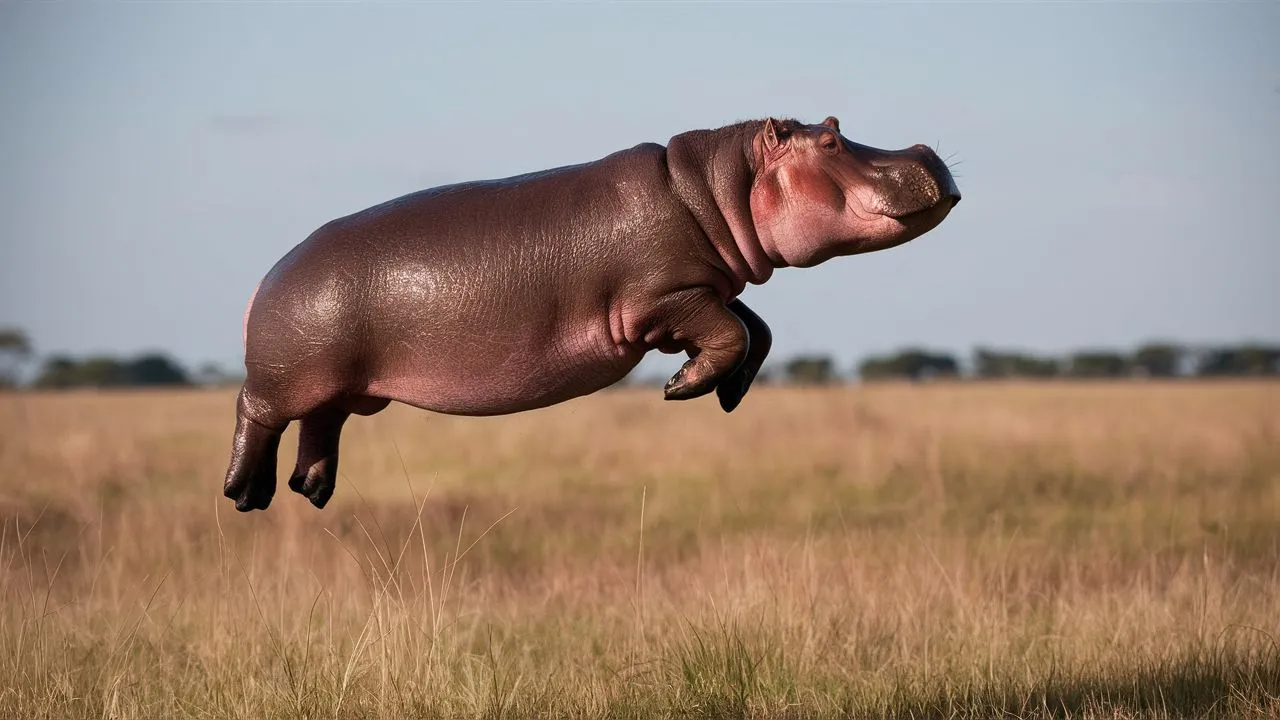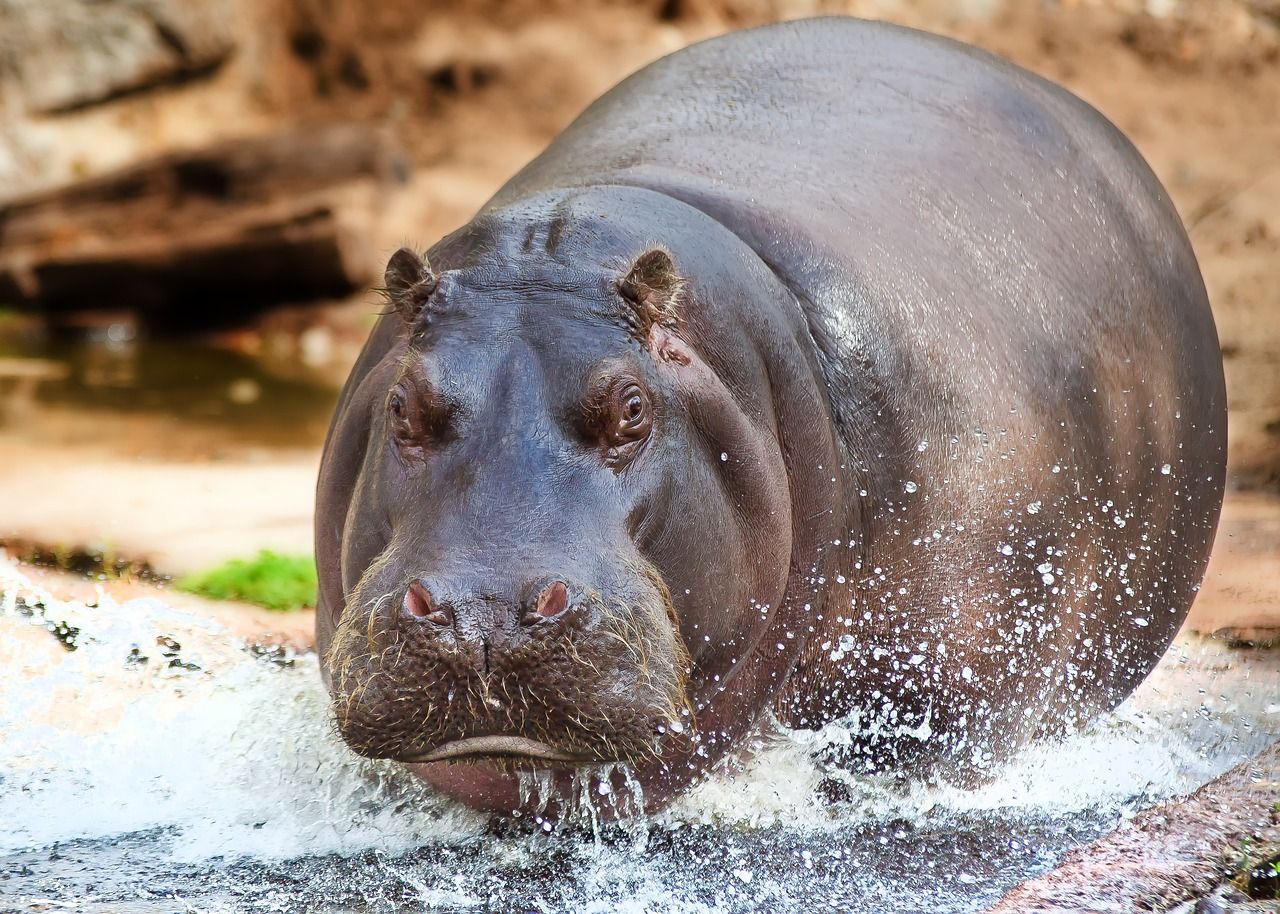Follow us on Google News (click on ☆)

Researchers from the Royal Veterinary College in London used videos of hippos taken at Flamingo Land Resort, a zoo in Yorkshire, to conduct their study. By analyzing these videos, they observed that when hippos trot at their maximum speed, they spend up to 15% of their running time completely off the ground. This phase, called "suspension," sees them literally hovering in the air for about 0.3 seconds.
This discovery is all the more remarkable considering hippos are among the heaviest animals on the planet, with males weighing over three tons (6,600 lbs). Until now, little research had been conducted on their locomotion due to their dangerous nature and aquatic habitat. As John Hutchinson, professor of evolutionary biomechanics and the study's lead author, explains, working with hippos is challenging due to their nocturnal behavior and time spent in the water.
Researchers compared the gait of hippos to that of other large terrestrial mammals. Unlike elephants, which never lift all four feet off the ground simultaneously, hippos, like horses, exhibit a suspension phase when moving quickly. However, hippos cannot gallop like rhinos, which have a more varied range of locomotion modes.
This study has important implications for understanding the evolutionary biomechanics of large terrestrial mammals. It provides better insight into how size and weight affect animal locomotion. For Kieran Holliday, scientific director at Flamingo Land Resort, this research is crucial for improving the care of captive hippos, particularly in terms of diagnosing and monitoring their mobility.

Illustration image Pixabay
Thus, this new study highlights the unexpected physical capabilities of hippos and contributes to our knowledge of their locomotion and behavior. The results open new perspectives for future research on large terrestrial mammals.